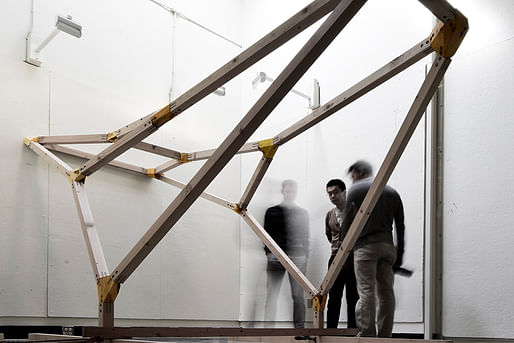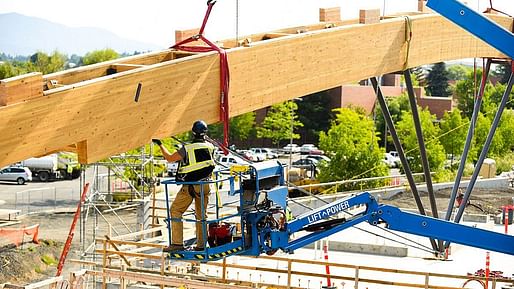

A team of academics working in the Digital Structures research group at MIT's Building Technology Program has combined local aesthetic desires with the recent international push to expend increasing amounts of mass timber elements into new construction.
Associate professor Caitlin Mueller is in charge of a group that spent the last four years strategizing the uses of upcycled tree waste as a base material for load-bearing structures in an effort to reduce the outsized emissions caused by the high-carbon systems.
Working together with the professor, the team set up a five-step design-to-fabrication process that combines the use of ascendant digital technologies to recreate the Y-shaped nodes typical in many architectural drawings. Mueller says the eventual goal is to replace many of the recently-felled trees in her area with custom-made functional structures that “recreate the atmosphere and spatial experience previously provided.”
With help from the nearby city of Somerville’s Urban Forestry Division, the process begins by creating a digitalized materials library culled from their vast collection of isolated tree fork samples using advanced but still inexpensive 3D scanner technology. The “skeletonized” samples are thus matched with the nodes in a sample architectural design in order to best optimize the orientation of load transfer and overall distribution of nodes in a sample architectural design.
Each possible distribution was assigned a possible score that would in the end determine the efficient use of the material inventory using a technique called the “Hungarian Algorithm” now used in dating apps and first developed in the 1950s.
The group was able to find a positive correlation between the number of available fork samples and matching scores that they engendered. The process then expanded to include the designer’s intent into the workflow via a set number of pre-submitted dimensional and performance parameters that allow for the ability to change shape either manually or using another algorithm, which is then followed by a structural analysis to check and provide possible alternative solutions.
Once the proper distribution of the forks had been finalized, the next step involved the cutting of end faces and removal of any excess bark by using a custom algorithm that helps to avoid a much more time-consuming machining process. The designs are then sent off to the Autodesk Boston Technology Center Build Space where they get robotically milled to prepare for assembly.

The last step involves assembling the linear elements and irregular fork joints to complete each structure. This part is relatively lo-fi (“It’s like a child’s toy set,” Mueller said. “You just follow the instructions on the joints to put all the pieces together.”) and results in a model that was thus installed in the center of MIT’s campus. Mueller says this is only a portion of the total structure, and that the remaining 40 nodes will eventually all come together in Somerville in the shape of an outdoor pavilion once academic activities resume following the eventual decline of Covid-19.
As of now, the team says they have plans to continue their research using an expanded library and added tomography scanning techniques that will allow for more accurate measurements of fiber strength and density. A second project was also completed using other repurposed source materials to create a series of geodesic domes. Mueller says the current approach is still “nowhere near what nature does in terms of complex fiber orientation and geometry,” but that, to her mind, the potential for innovation presented by the furthered technology is enormous.
“Now we have a new metric of performance: How well am I using available resources?” the professor said finally of the anticipated impact of her team’s research. “With the algorithm, we can compute that metric basically in real time, so we can work rapidly and creatively with that as another input to the design process.”
1 Comment
Am I the only one who didn't know what a "treefork" was and still doesn't know why there is a plethora of them to be upcycled?
Block this user
Are you sure you want to block this user and hide all related comments throughout the site?
Archinect
This is your first comment on Archinect. Your comment will be visible once approved.